Peter Behrens's Blog, page 580
November 11, 2011
Advanced Design
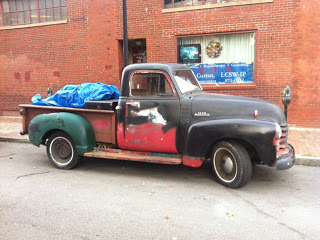 ©2011Scott Dorrance
©2011Scott Dorrance Don't often see 60 year old trucks in Maine, the saltwater state. Especially trucks like this one, clearly a survivor, not a meticulous restoration. Photographer Scott Dorrance spotted it on Park Street, just of Congress Street.
 ©2011 Scott Dorrance
©2011 Scott DorranceThe only thing I can imagine is that the truck spent most of the last 6 decades in a
barn, or in a truck-friendly climate, like the other Portland. This is one of the Advanced Design Series trucks that GM produced 1947-55. I drove one from Banff, Alberta to Panther Junction, Texas (and back!) in 1984, with Mr Toby Clark. It wasn't the fastest road trip ever...
 Deer Lodge, Montana (I think)...as we were towing 6 canoes, and the truck wasn't up to Interstate speeds--but it was an...adventure. The best kind of road trip.
Deer Lodge, Montana (I think)...as we were towing 6 canoes, and the truck wasn't up to Interstate speeds--but it was an...adventure. The best kind of road trip.
Published on November 11, 2011 10:32
November 9, 2011
Montrèalicite.
I have always been intrigued by Montreal architecture, and when I was last there, in September, on the Endless O'Briens Book Tour I went around taking photos of buildings and streets which I admired. Of course in that September light the whole place looked "beautiful"; like a (somewhat banal) movie of itself. In one of his Montreal short stories, the author Clark Blaise has a character thinking, as he's driving on a hideous road in the sprawl of northern Montreal exurbs, that Montreal can also be a heartbreakingly ugly city, one of the ugliest. And that is undeniably true, especially in, say, March. But there's also no denying its radiant power as a built place, as a vibrant & changing town with a sure sense of itself. Montreal has always possessed its own urban style. The town Montreal may remind you of most is not Paris (the only thing they have in common is the French language, sort of; the argots of Montrealais and Parisien are the same language, but only just) but Brooklyn, another mostly 19th century sprawling industrial town: row houses, neighbourhoods, industrial zones, churches. Of course Brooklyn has Manhattan across the river, which makes a difference. One o the wonderful things about Montreal compared to any other city in the world counting as major is how easy it is to leave. Cross the bridges to the south shore and in fifteen minutes you're driving past cornfields. Head north, and in forty five minutes you're into bear and moose country.

Above, rue de la Commune. Actually this part of town is much more like Dublin along the quays, or bits of Liverpool, than anywhere else. Like them it was mostly built as a 19th century trading/industrial city within the British Empire.
Most Montreal houses are joined by at least one wall with their neighbours, which makes for more efficient heating, and this city has wickedly cold Januarys.
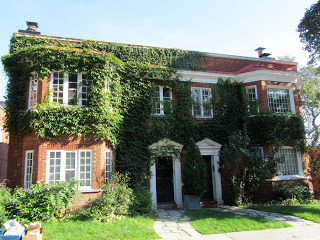
The Victorian city:
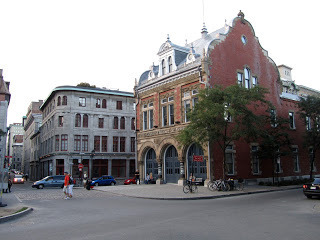
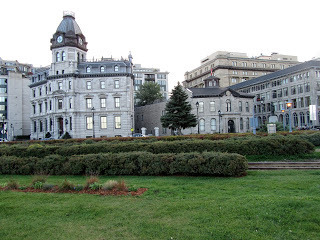
Montreal has a pretty strong modernist moment in the 1960s; I.M. Pei's Place Ville Marie is one of the important buildings of that era. Most of what was built in the Seventies and Eighties was, by comparison, unfortunate.

Centre-ville, seen from Westmount Summit:
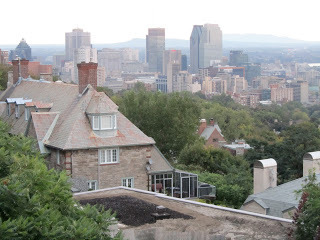
Street, lower Outremont neighbourhood:
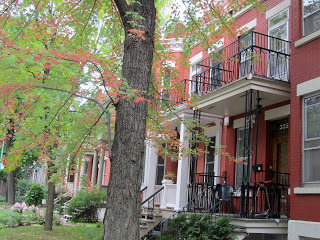
The fromagerie, ave. Bernard, Outremont:
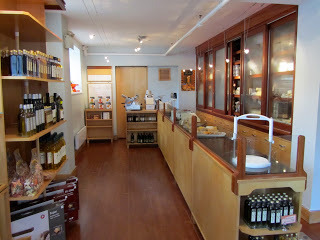
P'tit dejeuner, ave Bernard, Outremont:
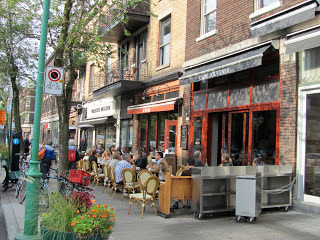
Yikes, I went to kindergarden here: Notre Dame de Sion, attached to the lycee Marie-de-France.

Westmount houses:
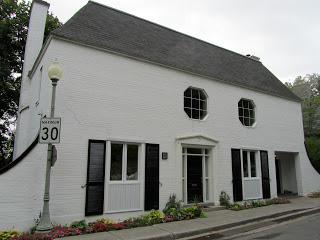
The Hart house on Cote St-Antoine: I believe that Hart was elected to the Legislative Assembly from Trois-Rivières in the 1840s and was the first Jew to be elected to a legislature in the British Empire and then after a struggle, and a reelection, finally permitted take his seat .

Lansdowne Avenue:
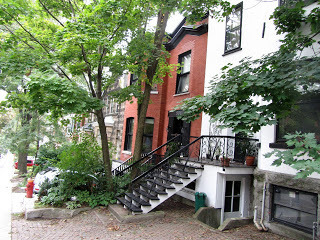
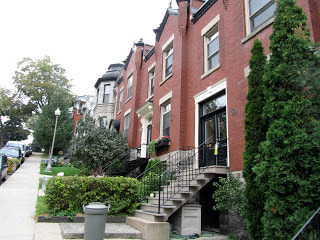
More Westmount houses:
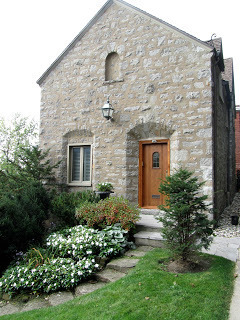
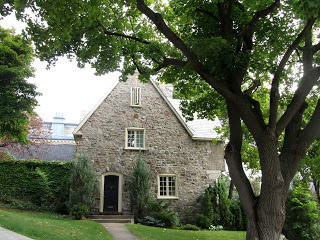
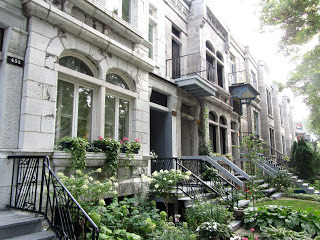
The Westmount novel genre is a bit thin. Two that immediately come to mind are Leonard Cohen's The Favourite Game. And Gwethalyn Graham's Earth and High Heaven. And of course there is always The O'Briens.

Above, rue de la Commune. Actually this part of town is much more like Dublin along the quays, or bits of Liverpool, than anywhere else. Like them it was mostly built as a 19th century trading/industrial city within the British Empire.
Most Montreal houses are joined by at least one wall with their neighbours, which makes for more efficient heating, and this city has wickedly cold Januarys.

The Victorian city:


Montreal has a pretty strong modernist moment in the 1960s; I.M. Pei's Place Ville Marie is one of the important buildings of that era. Most of what was built in the Seventies and Eighties was, by comparison, unfortunate.

Centre-ville, seen from Westmount Summit:

Street, lower Outremont neighbourhood:

The fromagerie, ave. Bernard, Outremont:

P'tit dejeuner, ave Bernard, Outremont:

Yikes, I went to kindergarden here: Notre Dame de Sion, attached to the lycee Marie-de-France.

Westmount houses:

The Hart house on Cote St-Antoine: I believe that Hart was elected to the Legislative Assembly from Trois-Rivières in the 1840s and was the first Jew to be elected to a legislature in the British Empire and then after a struggle, and a reelection, finally permitted take his seat .

Lansdowne Avenue:


More Westmount houses:



The Westmount novel genre is a bit thin. Two that immediately come to mind are Leonard Cohen's The Favourite Game. And Gwethalyn Graham's Earth and High Heaven. And of course there is always The O'Briens.
Published on November 09, 2011 19:06
Mercury Monarch in Vancouver
Back in July, Autoliterate came across a wonderful and mostly-original Canadian Mercury M-3 pickup in Wolfville, N.S. Mercury trucks were essentially rebadged Fords that were sold in Canada.
The Mercury Monarch was another Canada-only Ford model, and we just found one, parked out by English Bay, in Vancouver's West End. Best guess is that it's a 1951 model. Not an unrestored original, certainly. Nor is it a classic Mercury lead-sled. (See Autoliterate's post on Mercury Charlie) But it did look like a pretty cool ride, sun visor, fender skirts, suicide doors and all.
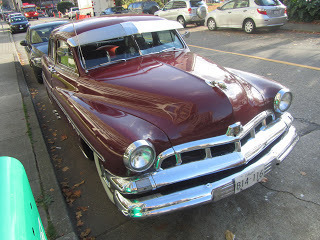
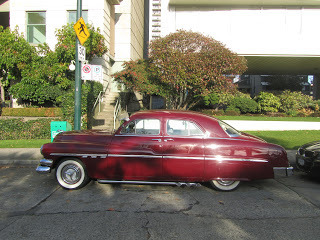
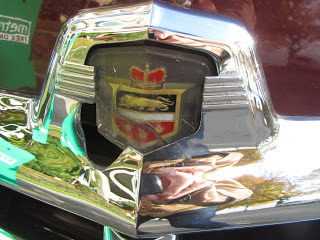 Maple leaves, a British lion, a crown. Canada, eh?
Maple leaves, a British lion, a crown. Canada, eh?


The Mercury Monarch was another Canada-only Ford model, and we just found one, parked out by English Bay, in Vancouver's West End. Best guess is that it's a 1951 model. Not an unrestored original, certainly. Nor is it a classic Mercury lead-sled. (See Autoliterate's post on Mercury Charlie) But it did look like a pretty cool ride, sun visor, fender skirts, suicide doors and all.


 Maple leaves, a British lion, a crown. Canada, eh?
Maple leaves, a British lion, a crown. Canada, eh?

Published on November 09, 2011 13:48
My Brilliant Careerism, part 9
Just received an ARC of the U.S. edition of THE O'BRIENS. U.S. pub. date is March 6 2012, with a launch party at the Irish Arts Center in Hell Kitchen, NYC, co-sponsored by NYU's Glucksmann Ireland House and the Canadian Consulate in NYC. (A list of events planned for NYC, TX, NC, ME and VT is up at my website. Hope to see you along the way.)
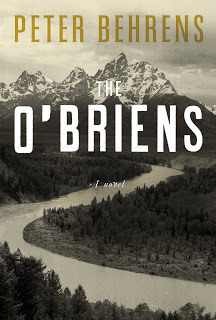
"A distinctly 20th century family epic . . . pitch-perfect. " — National Post


"A distinctly 20th century family epic . . . pitch-perfect. " — National Post
Published on November 09, 2011 06:52
November 8, 2011
Nissan Figaro and Mitsubishi Space Gear
I walked around Vancouver on Sunday afternoon, trying to overcome some serious jet-lag. Of course I had my camera, the Canon SX210IS, which has turned out to be a great machine, and kept my eyes open for appealing vehicles, Autoliterate has been long on literate lately; short on autos. Time to redress the balance. The first Vancouver machine that caught my eye, in an alley in the West End, was this little Japanese import:
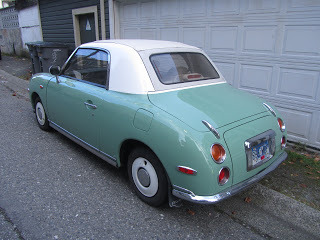
It had right-hand-drive, and a certain lustrous quality of fit and finish: Japanese cars sold into their home market seem to exceed the (pretty high) standards of fit and finish typical of the cars Nissan, Toyota, Honda, et al sell in North America. This is a Figaro, and it's a Nissan, though the Nissan nameplate is nowhere on the car. Nissan built and sold 20,000 in the early Nineties. They were originally intended for the home market but a bunch went to the U.K.. And imported Japanese specialty cars are quite a hot item on the Canadian West Coast, apparently. You can learn about importing Figaros and other Japanese vehicles here.
The Figaro has a certain Hello Kitty cuteness vibe, perhaps annoying, and I suppose a lot of car guys would see it as a classic girl-car, teeny and twee. But I distrust gendering of vehicles--find it kind of boring, especially the ersatz masculinity which North American manufacturers ladle onto vehicles aimed at the guy-market, especially those monstrous huge pickup trucks.
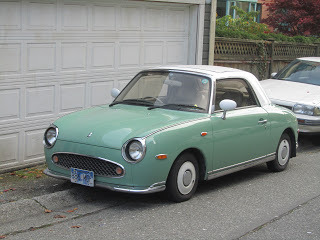
I've been on the British Columbia coast a lot this season and have noticed that imported Japanese 4WD vans are popular out here, right-hand drive and all. I've seen a lot of Mitsubishi Delica "Space Gear" vans (gotta love Japanese vehicle nomenclature; and these compact, rugged-looking little vans do seem to have a lot of space for gear, though they seem rugged too, and nimble--anything but "delicate").
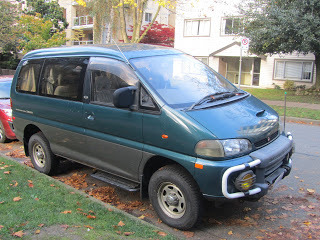
They seem to be popular with tree-planters out here in British Columbia, and surfers, and people who spend a lot of time on bad roads through rain forest. I first noticed them abaord the ferries to Vancouver Island and Denman island, last month. Though these examples were spotted on the sedate streets of Vancouver's West End.

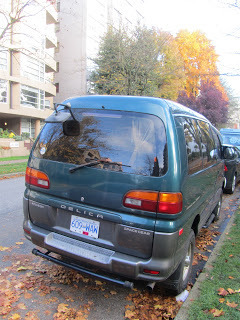


It had right-hand-drive, and a certain lustrous quality of fit and finish: Japanese cars sold into their home market seem to exceed the (pretty high) standards of fit and finish typical of the cars Nissan, Toyota, Honda, et al sell in North America. This is a Figaro, and it's a Nissan, though the Nissan nameplate is nowhere on the car. Nissan built and sold 20,000 in the early Nineties. They were originally intended for the home market but a bunch went to the U.K.. And imported Japanese specialty cars are quite a hot item on the Canadian West Coast, apparently. You can learn about importing Figaros and other Japanese vehicles here.
The Figaro has a certain Hello Kitty cuteness vibe, perhaps annoying, and I suppose a lot of car guys would see it as a classic girl-car, teeny and twee. But I distrust gendering of vehicles--find it kind of boring, especially the ersatz masculinity which North American manufacturers ladle onto vehicles aimed at the guy-market, especially those monstrous huge pickup trucks.

I've been on the British Columbia coast a lot this season and have noticed that imported Japanese 4WD vans are popular out here, right-hand drive and all. I've seen a lot of Mitsubishi Delica "Space Gear" vans (gotta love Japanese vehicle nomenclature; and these compact, rugged-looking little vans do seem to have a lot of space for gear, though they seem rugged too, and nimble--anything but "delicate").

They seem to be popular with tree-planters out here in British Columbia, and surfers, and people who spend a lot of time on bad roads through rain forest. I first noticed them abaord the ferries to Vancouver Island and Denman island, last month. Though these examples were spotted on the sedate streets of Vancouver's West End.


Published on November 08, 2011 07:12
November 7, 2011
Freighters on the nod, English Bay
 Whenever I'm in Vancouver, I walk the path along the seawall in Stanley Park, missing Maine and reconnecting with the idea of ocean. There are always bulk carriers parked on moorings out in the Bay, waiting their turns to steam up Burrard Inlet and fill with coal, wheat, potash, etc. You can tell they're empty because they are riding high. And there are more of them out there than usual: I wonder if the declining economy and the drop in commodity prices has slowed international trade? China isn't as hungry for Canadian raw materials this year as it was last year.
Whenever I'm in Vancouver, I walk the path along the seawall in Stanley Park, missing Maine and reconnecting with the idea of ocean. There are always bulk carriers parked on moorings out in the Bay, waiting their turns to steam up Burrard Inlet and fill with coal, wheat, potash, etc. You can tell they're empty because they are riding high. And there are more of them out there than usual: I wonder if the declining economy and the drop in commodity prices has slowed international trade? China isn't as hungry for Canadian raw materials this year as it was last year.When I see the ships out on English Bay, I'm always reminded of lines from Bruce Cockburn's Wondering Where the Lions Are:
Freighters on the nod on the surface of the bay
One of these days we're going to sail away
Sail into eternity
Some kind of ecstasy
Got a hold on me
And I'm wondering where the lions are.
Did Bruce write the song, or have the vision, while staying at the Sylvia?--my favorite Vancouver hotel. Excellent views of English Bay. The Chelsea Hotel of the Pacific Northwest.

Well the B.C. Lions (Vancouver's (Canadian) football team) look to be heading for the Grey Cup...if they win their Western Finals, as expected...the 99th Grey Cup is being played in Vancouver, later this month. The Montreal Alouettes still have a chance in the east...but the Hamilton Tiger Cats whipped them badly last weekend. Are the Toronto Argonauts still in the running? What about the Saskatchewan Roughriders, and the Winnipeg Blue Bombers? The Calgary Stampeders, and the Edmonton Eskimos?
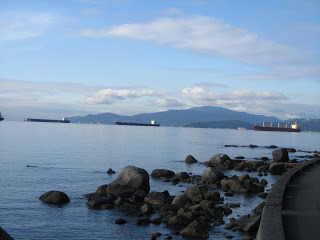
Published on November 07, 2011 16:48
Clark Blaise, Alistair MacLeod, and moi.
I spent part of last weekend at the Windsor (Ontario) Book Festival. From my room on the 19th floor of the Riverside Inn I had a view of a weirdly Oz-like Detroit shining across the St. Clair River:
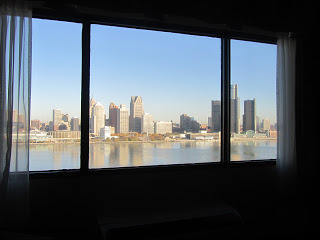
One of the wonderful things about this fall's Endless O'Briens Book Tour has been the chance to spend time with my old teacher and mentor, the short story writer Clark Blaise, who has a new collection The Meagre Tarmac out this fall. Clark and I have been on the circuit together over the last few weeks: Calgary, Vancouver, Windsor...
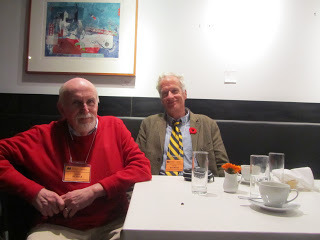
Meagre Tarmac was on the Scotiabank Giller Prize longlist, and is shortlisted for the Rogers Writers Trust Prize. Reviews have been excellent--more are anticipated as the book reaches the U.S, market--and it is wonderful to see this man, a classic example of a "writer's writer", getting the wider attention and acclaim his work deserves.
BTW I wrote the introduction to Clark's collected Montreal Stories, and that book is an excellent introduction to the work.
At the Windsor Book Festival last Saturday night I read with the great short story writer (The Lost Salt Gift of Blood; As Birds Bring Forth the Sun) and novelist (No Great Mischief) Alistair MacLeod, and that was an enormous honour. Alistair was a generous teacher when I met him at the Banff Centre, thirty years ago.
From Thonmas Mallon's review of No Great Mischief in the NY Times a few years back:
 month ago, the fiction of Alistair MacLeod was entirely unknown to me. The 64-year-old Canadian writer has published just three books, and ''No Great Mischief,'' his only novel, is the first of them to be widely available in the United States. Having spent the last few weeks reading, in avid succession, volumes that his Canadian devotees have been given after long intervals of anticipation, I can report that MacLeod's world of Cape Breton -- with its Scottish fishermen and their displaced heirs, the miners and young professionals it has mournfully sent to the rest of the nation -- has become a permanent part of my own inner library.
month ago, the fiction of Alistair MacLeod was entirely unknown to me. The 64-year-old Canadian writer has published just three books, and ''No Great Mischief,'' his only novel, is the first of them to be widely available in the United States. Having spent the last few weeks reading, in avid succession, volumes that his Canadian devotees have been given after long intervals of anticipation, I can report that MacLeod's world of Cape Breton -- with its Scottish fishermen and their displaced heirs, the miners and young professionals it has mournfully sent to the rest of the nation -- has become a permanent part of my own inner library.
My favorite Blaise short story? There are a bunch, but one that always comes to mind: I'm Dreaming of Rocket Richard, partly because it woke me up to the possibility of writing about my hometown, Mo/ray/al. (In my introduction I wrote that Rocket Richard always pairs in my mind with Truffaut's 400 Blows.)
My favorite MacLeod story? A toss up between Vision and The Closing Down of Summer, which I first heard Alistair read at Banff, in 1981.
It was such a beautiful day at Windsor. Guys were fishing (pickerel and perch) in the St. Clair; big bulk carriers were steaming by heading for Lake Huron, leaving big, splashy waves to bang up against the river shore....and gleaming Detroit looked like anything but a rust-belt town.

Speaking of the Endlessness of The O'Briens Book Tour: we're starting to schedule events around the time of the US publication in March 2012. Right now, it looks like readings, book signing, talks, and slide shows in New York City, Maine, Vermont, Texas, North Carolina, Pennsylvania and California. Details will be going up on the website events calendar over the next few days. I've just received an ARC of the US edition from Pantheon, and it looks great.


One of the wonderful things about this fall's Endless O'Briens Book Tour has been the chance to spend time with my old teacher and mentor, the short story writer Clark Blaise, who has a new collection The Meagre Tarmac out this fall. Clark and I have been on the circuit together over the last few weeks: Calgary, Vancouver, Windsor...

Meagre Tarmac was on the Scotiabank Giller Prize longlist, and is shortlisted for the Rogers Writers Trust Prize. Reviews have been excellent--more are anticipated as the book reaches the U.S, market--and it is wonderful to see this man, a classic example of a "writer's writer", getting the wider attention and acclaim his work deserves.
BTW I wrote the introduction to Clark's collected Montreal Stories, and that book is an excellent introduction to the work.
At the Windsor Book Festival last Saturday night I read with the great short story writer (The Lost Salt Gift of Blood; As Birds Bring Forth the Sun) and novelist (No Great Mischief) Alistair MacLeod, and that was an enormous honour. Alistair was a generous teacher when I met him at the Banff Centre, thirty years ago.
From Thonmas Mallon's review of No Great Mischief in the NY Times a few years back:
 month ago, the fiction of Alistair MacLeod was entirely unknown to me. The 64-year-old Canadian writer has published just three books, and ''No Great Mischief,'' his only novel, is the first of them to be widely available in the United States. Having spent the last few weeks reading, in avid succession, volumes that his Canadian devotees have been given after long intervals of anticipation, I can report that MacLeod's world of Cape Breton -- with its Scottish fishermen and their displaced heirs, the miners and young professionals it has mournfully sent to the rest of the nation -- has become a permanent part of my own inner library.
month ago, the fiction of Alistair MacLeod was entirely unknown to me. The 64-year-old Canadian writer has published just three books, and ''No Great Mischief,'' his only novel, is the first of them to be widely available in the United States. Having spent the last few weeks reading, in avid succession, volumes that his Canadian devotees have been given after long intervals of anticipation, I can report that MacLeod's world of Cape Breton -- with its Scottish fishermen and their displaced heirs, the miners and young professionals it has mournfully sent to the rest of the nation -- has become a permanent part of my own inner library.My favorite Blaise short story? There are a bunch, but one that always comes to mind: I'm Dreaming of Rocket Richard, partly because it woke me up to the possibility of writing about my hometown, Mo/ray/al. (In my introduction I wrote that Rocket Richard always pairs in my mind with Truffaut's 400 Blows.)
My favorite MacLeod story? A toss up between Vision and The Closing Down of Summer, which I first heard Alistair read at Banff, in 1981.
It was such a beautiful day at Windsor. Guys were fishing (pickerel and perch) in the St. Clair; big bulk carriers were steaming by heading for Lake Huron, leaving big, splashy waves to bang up against the river shore....and gleaming Detroit looked like anything but a rust-belt town.

Speaking of the Endlessness of The O'Briens Book Tour: we're starting to schedule events around the time of the US publication in March 2012. Right now, it looks like readings, book signing, talks, and slide shows in New York City, Maine, Vermont, Texas, North Carolina, Pennsylvania and California. Details will be going up on the website events calendar over the next few days. I've just received an ARC of the US edition from Pantheon, and it looks great.
Published on November 07, 2011 15:38
November 6, 2011
Lee Friedlander & the cars of 1964
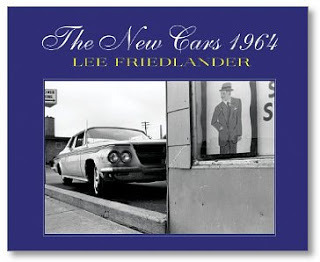
In 1964, two young art directors at Harper's Bazaar named Ruth Ansel and Bea Feitler hired the then up-and-coming photographer Lee Friedlander to photograph the much-anticipated new car models of that year. Friedlander's jazz album covers had proven he knew how to work on assignment, and Ansel and Feitler realized that if Bazaarwas to obtain the photographer's best work he should be let alone to make it. It's difficult now to comprehend how anticipated next year's cars were to Americans of the 1960s, but if Friedlander was aware of this, the photographs he delivered (on time) don't betray it. Rather than depicting the cars in seductive locales, he had them delivered to parking lots near burger joints, cheap furniture stores, downscale beauty parlors and-most ignominiously of all-a used-car lot. As Friedlander says, "I just put the cars out in the world, instead of on a pedestal." The magazine's editor-in-chief was unamused, fearing that the photographs would deter car manufacturers from advertising in Harper's, so Friedlander was paid for his work and the photographs were soon forgotten-until he stumbled across them in 2010. Even a cursory study of this project reveals a compendium of strategies that would soon bring Friedlander acclaim and wreak havoc with widely accepted notions of what constituted a good photograph. Now, the Continentals, Eldorados and Mercury Meteors of 1964 have their day in this beautifully produced volume.
You can find it at Photo-eye bookstore
 Looks like a 1964 Bonneville
Looks like a 1964 Bonneville Mercury Monterey
Mercury Monterey
Published on November 06, 2011 15:31
November 2, 2011
Alison Langley's Chevrolet C50
Enough book. Enough Canada. Enough travel. Enough poetry. Time to get the Autoliterate focus back. This blog was inspired originally by my unrequited passion for gnarly old trucks. While visiting photographer Alison Langley last month, I noticed this wonderful machine in her driveway,
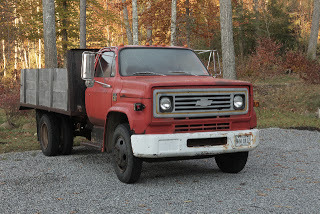
and asked Alison to consider it as a subject. She is usually out on her chase boat in Penobscot Bay, or at the Antigua Classic, taking pictures of classic sailboats, but she obliged me with these shots of the beast.
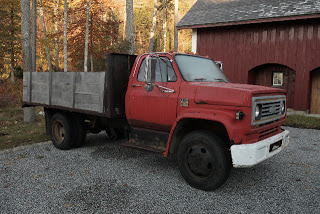
The C trucks were produced from 1967 to the late 80s in a variety of bodies: they were farm trucks and commercial haulers, medium-duty. (We're getting a bit trainspotterish here, I realize.) This one is in the period 1973-90 but my limited expertise can't get any closer than that. It looks to be in pretty solid shape for an old saltwater Maine truck.
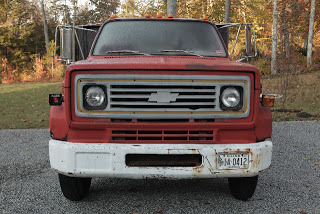
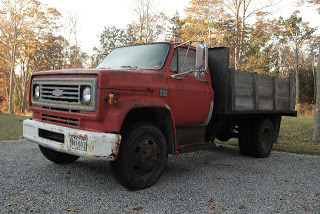
Style? Yes, I would say so. This truck looks like a tool to do a job. No glamor to the truck or the job but a certain je ne sais quoi beauty, nonetheless. When you look at the photos you can just about hear the grumble of the engine, and feel the machinerumbling and grunting up toward second gear.
Form follows function=true style.

and asked Alison to consider it as a subject. She is usually out on her chase boat in Penobscot Bay, or at the Antigua Classic, taking pictures of classic sailboats, but she obliged me with these shots of the beast.

The C trucks were produced from 1967 to the late 80s in a variety of bodies: they were farm trucks and commercial haulers, medium-duty. (We're getting a bit trainspotterish here, I realize.) This one is in the period 1973-90 but my limited expertise can't get any closer than that. It looks to be in pretty solid shape for an old saltwater Maine truck.


Style? Yes, I would say so. This truck looks like a tool to do a job. No glamor to the truck or the job but a certain je ne sais quoi beauty, nonetheless. When you look at the photos you can just about hear the grumble of the engine, and feel the machinerumbling and grunting up toward second gear.
Form follows function=true style.
Published on November 02, 2011 17:31
October 31, 2011
Wychwood, U of T, The Annex
Been in Toronto for most of a week, book-touring. Last night read at an IFOA event in Hamilton with my fellow Anansi authors Lynn Coady, Stephen Kellman and Patrick DeWitt.
[image error]
It was an excellent event at an art gallery in Hamilton, an old steel-mill town, but on the ride home we were all so exhausted from hearing ourselves talk that there was not a word spoken in the van during the 45-minute ride across the monstrous Greater Toronto sprawl.
BTW if any Torontonians are looking for signed first editions of The O'Briens, there are a few at Book City, on Bloor St., and at the Indigo store on Bay Street, downtown.
I spent most of today on foot, hiking between various meetings, and enjoying the October light and some of Toronto's neighbourhoods and buildings. My favorite neighbourhood is Wychwood Park, a bit of countryside tucked away in the middle of west end Toronto. No trophy homes, though. And lots of trees. A Canadian hardwood forest in the middle of this enormous, noisy town.
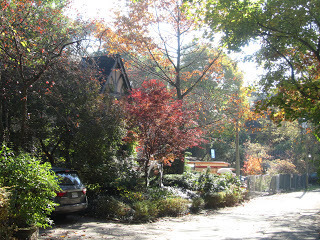
[image error]
[image error]
I found lots of buildings from different eras around the University of Toronto that were impressive. The Leslie Dan Pharmacy Bldg., corner of University Ave. and College Street, certainly caught my eye. During the Seventies, when I was developing my eye, all new buildings, especially in Canada, were monstrous. It was a terrible time for architecture, and for Canadian cities, which were being rebuilt in hideous urine-colored concrete.
I still feel the same way about the architecture of that era--can't tear it down fast enough, as far as I'm concerned--but there have certainly been lots of graceful new building since then, and it's always encouraging to see a powerful statement of the modernist aesthetic, especially when it's not an office tower.

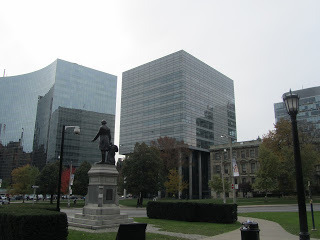
Also much liked this U of T building: the Donnelly Centre for Cellular and Biomolecular Research:

The best thing about Toronto are the neighborhoods and while I walked from a meeting at College and Bathurst to another in Rosedale, I kept to the quiet and shady streets of The Annex neighborhood, which are thriving but don't feel triumphalist, yet, though I realize even the homeliest house in this part of town is well over a million dollars. Mostly they are simple, not particularly well-built houses from the 1880s-1920s. Almost all red brick, of an Ontario clay quite different from Montreal red brick. So much red brick that when I spotted this little yellow house, I had to catch it.



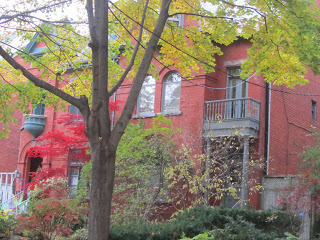
[image error]

[image error]
It was an excellent event at an art gallery in Hamilton, an old steel-mill town, but on the ride home we were all so exhausted from hearing ourselves talk that there was not a word spoken in the van during the 45-minute ride across the monstrous Greater Toronto sprawl.
BTW if any Torontonians are looking for signed first editions of The O'Briens, there are a few at Book City, on Bloor St., and at the Indigo store on Bay Street, downtown.
I spent most of today on foot, hiking between various meetings, and enjoying the October light and some of Toronto's neighbourhoods and buildings. My favorite neighbourhood is Wychwood Park, a bit of countryside tucked away in the middle of west end Toronto. No trophy homes, though. And lots of trees. A Canadian hardwood forest in the middle of this enormous, noisy town.

[image error]
[image error]
I found lots of buildings from different eras around the University of Toronto that were impressive. The Leslie Dan Pharmacy Bldg., corner of University Ave. and College Street, certainly caught my eye. During the Seventies, when I was developing my eye, all new buildings, especially in Canada, were monstrous. It was a terrible time for architecture, and for Canadian cities, which were being rebuilt in hideous urine-colored concrete.
I still feel the same way about the architecture of that era--can't tear it down fast enough, as far as I'm concerned--but there have certainly been lots of graceful new building since then, and it's always encouraging to see a powerful statement of the modernist aesthetic, especially when it's not an office tower.


Also much liked this U of T building: the Donnelly Centre for Cellular and Biomolecular Research:

The best thing about Toronto are the neighborhoods and while I walked from a meeting at College and Bathurst to another in Rosedale, I kept to the quiet and shady streets of The Annex neighborhood, which are thriving but don't feel triumphalist, yet, though I realize even the homeliest house in this part of town is well over a million dollars. Mostly they are simple, not particularly well-built houses from the 1880s-1920s. Almost all red brick, of an Ontario clay quite different from Montreal red brick. So much red brick that when I spotted this little yellow house, I had to catch it.




[image error]
Published on October 31, 2011 18:07



